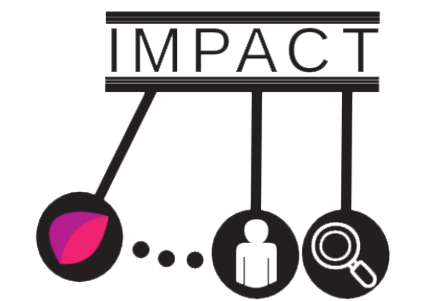PFIC Patient-Centered CER Priorities

Community-Identified Questions
- Using data from the Treatment Experience App (TEA), focus groups, and surveys conducted as part of project IMPACT, participants – patients, parents, clinicians, and researchers – worked together to create a list of important treatment questions. These questions highlight areas where there isn’t enough information yet – and where more research could help improve care and decision-making.
- These questions are grouped into four main categories: Medications, Surgeries, Nutrition, and Diagnosis, Delivery of Care & Other Support.
Medications
- How do the different non-IBAT medications compare in reducing itch?
- How does combining IBAT inhibitors with other medications compare to using IBAT inhibitors alone for reducing itch, gastrointestinal symptoms, and improving quality of life?
- What are the short and long-term side effects of IBAT inhibitors versus external and/or internal biliary diversion surgery?
- How do alternative therapies like cold baths or massage impact itching and quality of life?
- What is the best medication to reduce PFIC-related fatigue?
- What is the best way to manage the psychological effects of PFIC on patients and families during any stage of the disease?
- How does the mental health of PFIC patients receiving psychological intervention compare with those who receive none?
- Which is more effective at reducing post-transplant pruritus: IBAT inhibitors, non-IBAT medications, or other treatments?
- What is the comparative effectiveness of antidiarrheals, IBAT inhibitors, external and internal biliary diversion surgery in reducing post-transplant diarrhea?
- How do the short and long-term side effects of post- liver transplant medications compare to pre- liver transplant medications?
Surgeries
- How does the likelihood of benefit from internal versus external biliary diversion vary among different PFIC types?
- What will work better to relieve itch – external or internal biliary diversion
- What ostomy supplies have worked best with an external biliary diversion?
- Which delays the need for liver transplant longer: diversion surgery or IBAT inhibitors?
- How does the financial burden of surgical biliary diversion or liver transplant compare to the financial burden of being prescribed an IBAT inhibitor long-term?
- How and when do you most effectively reverse an external or internal biliary diversion to solely using IBAT inhibitor?
- What are the best criteria to determine the necessity and urgency of liver transplant?
- When is the optimal time to pursue liver transplantation?
- How does a live donor liver transplant compare to a deceased donor liver transplant when it comes to care, longevity, and quality of life after transplant?
- How do growth and quality of life compare pre- and post- liver transplant?
- How do different surgeries (external/internal biliary diversion and liver transplant) compare in improving the quality of life for PFIC patients and their families?
Nutrition
- What types of OTC supplements best support growth and development?
- How do aggressive nutritional treatments (such as NG tubes or TPN) compare to more passive approaches (like oral formulas) in terms of tolerability, as well as their impact on weight, growth, and quality of life?
- How does regular versus infrequent monitoring of vitamin levels impact health and quality of life outcomes related to vitamin deficiencies?
- Which is better: formula or blended food?
- How does an MCT-enhanced diet impact growth versus a non- MCT enhanced diet?
- How does a diet high in processed foods, sugars, fats, and starches compare with one containing fewer of these elements in terms of its impact on pruritus, gastrointestinal symptoms, quality of life, and liver health?
- How do antidiarrheal medications (like loperamide) compare to external/internal biliary diversion surgery in reducing diarrhea after liver transplant?
Diagnosis, delivery of care, & other support
- What is the best approach to reduce the time to diagnosis for PFIC?
- How does one measure of itch compare to another (e.g. inpatient surveys, patient-reported outcomes, monitoring with a daily app, wearables)?
- What is the comparative effectiveness of pain management intervention (e.g., EMLA cream or gas protocol for needle insertion) versus no pain management intervention in improving patients’ mental health?
- What is the comparative effectiveness of having a dietician in the care team versus no dietician in improving nutrition and quality of life outcomes for PFIC patients?
- What is comparative effectiveness of mental health support in addition to itch treatments versus itch treatments alone (i.e., usual care) in improving patient and caregiver mental health, itch severity, and quality of life?
- What is the best way to make the process of insurance approvals for medications easier and faster?
- What is the best way to educate my child’s school personnel about PFIC?
- What is the best way to educate my providers and specialists about PFIC?
- What is the best way to improve the transition from pediatric to adult care?
- What is the best supplemental insurance to help cover costs associated with PFIC?
Community-Identified Outcomes
IMPACT participants also identified important outcomes to assess treatment effectiveness in the proposed questions above, categorized into two types: patient-reported and clinical.
Patient-Reported
Itch relief, skin health, sleep quality, reduction of pain, reduction of fatigue, reduction of diarrhea, reduced frequency and severity of episodes
Itch relief, reduced abdominal pain/discomfort, improved social acceptance (e.g., concerning ostomy bags, growth delays), reduction of diarrhea, improved toilet training
Improved palatability (e.g. treatment taste, ease of consuming quantity)
Improved patient quality of life, improved quality of life for caregivers/family/siblings, improved mental health (reduced anxiety/depression/irritability), improved focus and school performance, improved ability to enjoy major life events, play and swim
Reduced number of workdays missed for care, lowered financial burden of the disease and treatments, impact of delayed insurance approvals on quality of life, impact of switching insurance companies on treatment access, improved ease of acquiring compounded medications, trust in provider/healthcare system, improved testing for cancers
Clinical
Slowed/halted disease progression, native liver survival
Native liver survival, reduced post-transplant complications
Improved vitamin levels, weight gain, improved growth (height), improved strength, reduction/prevention of hearing loss

